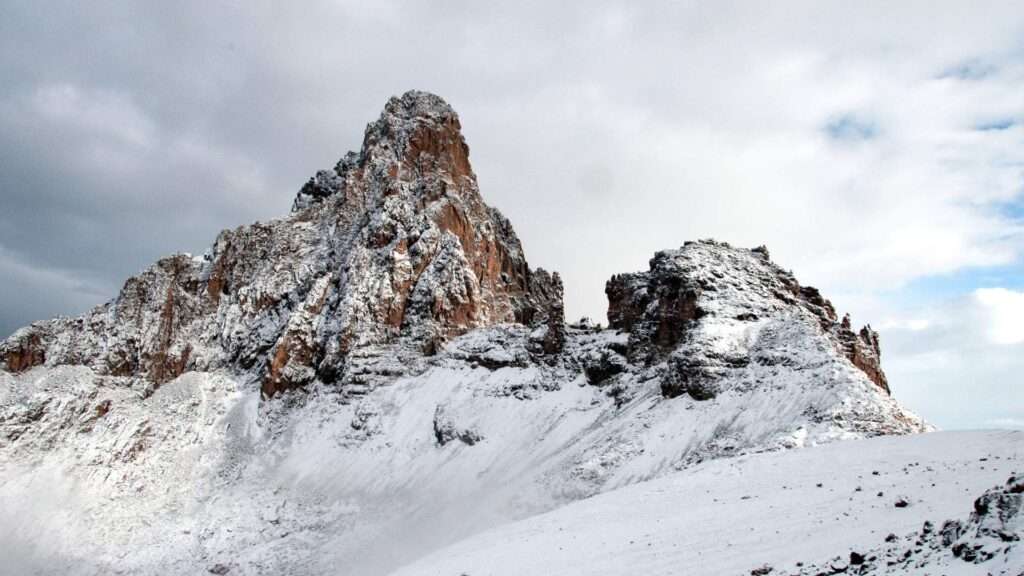Mount Kenya, situated roughly 150 kilometers northeast of Nairobi, stands as Africa’s second-highest peak, reaching a height of 5,199 meters. Recognized as a UNESCO World Heritage Site, Mount Kenya is cherished for its rugged beauty and the unique ecosystems thriving on its slopes.
There are several routes to the summit, each offering its own challenges and rewards. The most popular routes are Sirimon, Chogoria, and Naro Moru. While reaching the highest peaks, Batian and Nelion, requires technical climbing skills, Point Lenana, the third-highest peak, can be reached by hikers. For those less inclined to climb, Mount Kenya offers numerous trekking and hiking opportunities through bamboo forests, moorlands, and alpine meadows. The diverse scenery is as varied as the trekker’s stamina.
Several campsites are stationed along the trekking paths and near the peaks. It’s an exhilarating experience, offering a close encounter with nature and the night sky. The lower slopes of Mount Kenya are home to an array of wildlife, including elephants, buffalos, and various primates. Bird watchers will be particularly delighted with the variety of species on offer.
Giant Forest Hog – Often found wandering the lower altitude forests, these hefty fellows are unique to the rainforests of Mount Kenya. Mount Kenya Hyrax – Don’t be deceived by their diminutive size—these small, furry creatures are more closely related to elephants than to rodents. The Abbot’s Starling is a treat for bird watchers, due to its limited range restricted to a few locations including Mount Kenya. While not endemic, the rare sight of albino zebras roaming the plains near Mount Kenya can be quite the head-turner.

Glaciers and Snow Caps
Yes, snow in Africa! Mount Kenya’s peaks are often adorned with glaciers and snow caps, a unique sight juxtaposed against the equatorial location.
Mineral Springs
The Nanyuki area, near the base of the mountain, is known for its picturesque mineral springs. A easy trip from the main hiking routes, it’s worth a visit.
Vertical Bog
This unusual and somewhat challenging terrain is a sight to behold and a test of agility for trekkers.

Best Time to Visit
Optimal Weather
The dry seasons from January to February and June to September are ideal for climbing and trekking. The weather is more stable, and the trails are less muddy.
Precautions
Cold weather gear is essential, even though Mount Kenya is near the equator. Layered clothing, a good-quality sleeping bag, and proper hiking boots are must-haves. Carry a first aid kit and ensure you have all necessary vaccinations before traveling. Mosquito repellent is a good idea for lower altitudes, even though malaria is less common at higher elevations. Hiring an experienced guide is crucial for both safety and enhancing the experience. Permits are required for trekking and overnight stays, and are best arranged in advance.
Mount Kenya offers an adventurous and scenic escape with activities ranging from high-altitude climbs to peaceful wildlife viewings. The blend of diverse ecosystems, unique sightings, and challenging terrains make it a destination worth adding to your clients’ itineraries. Just remember, the early bird catches the worm—or in this case, the best trek!


















